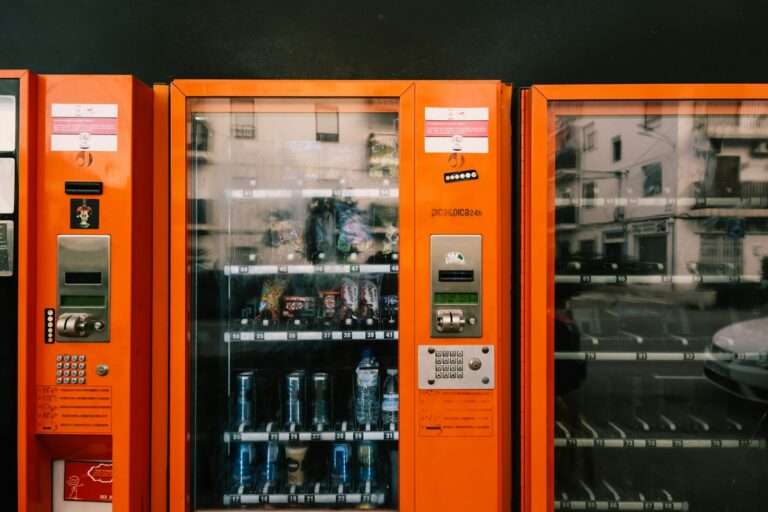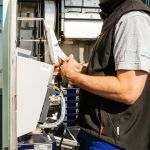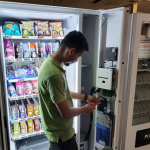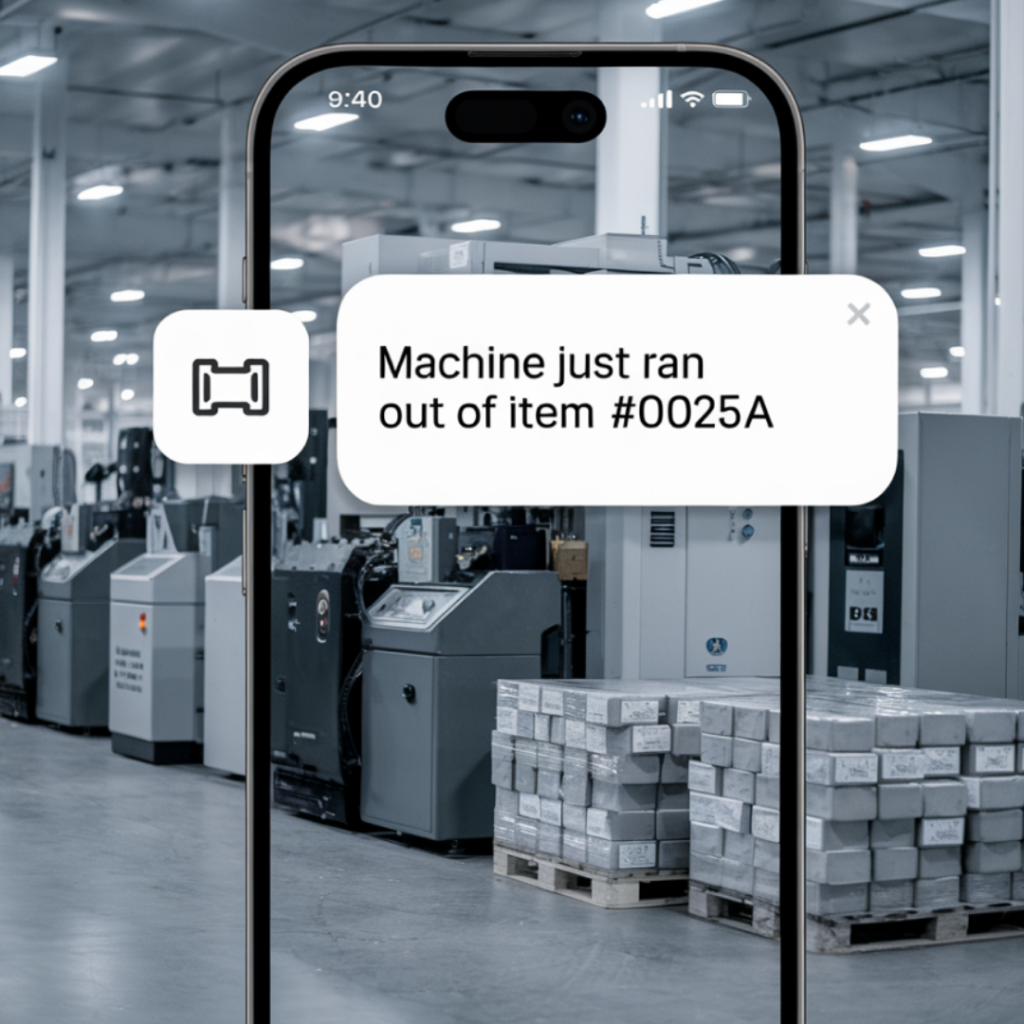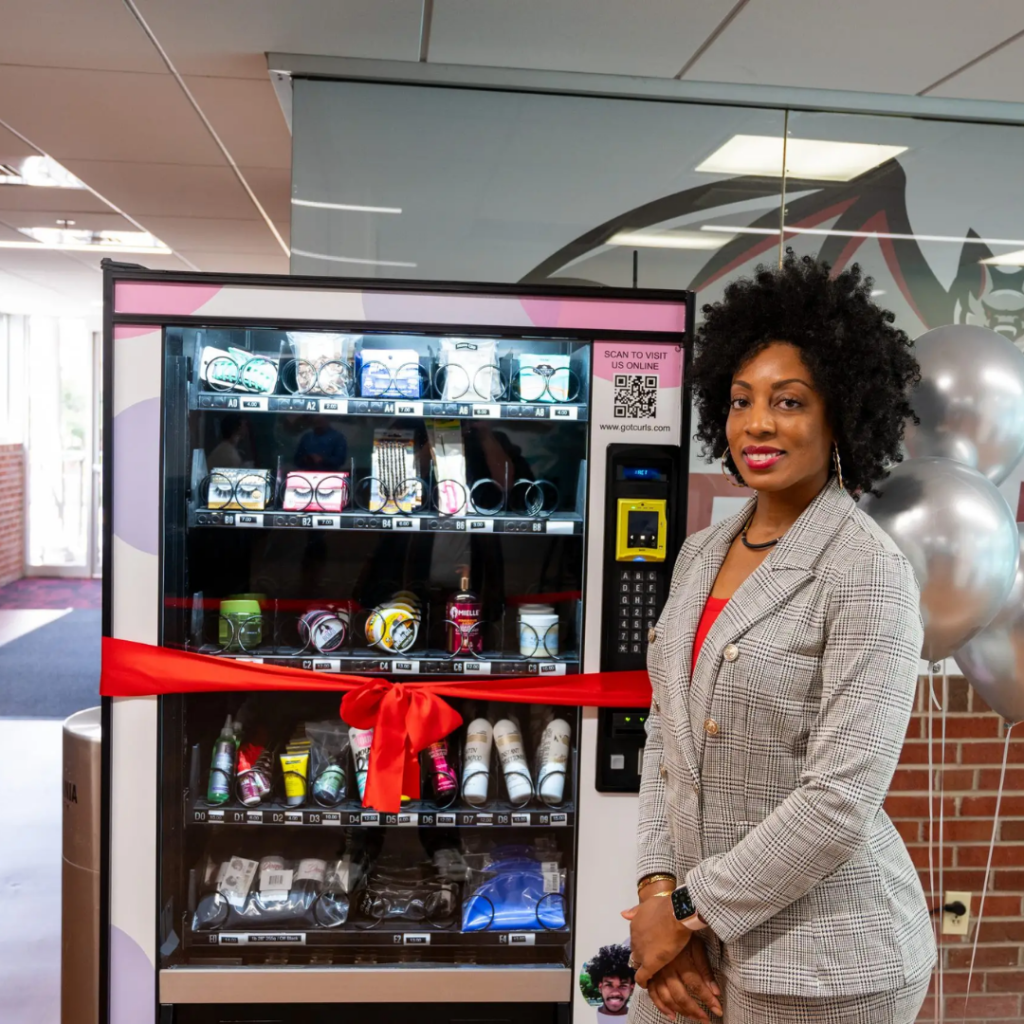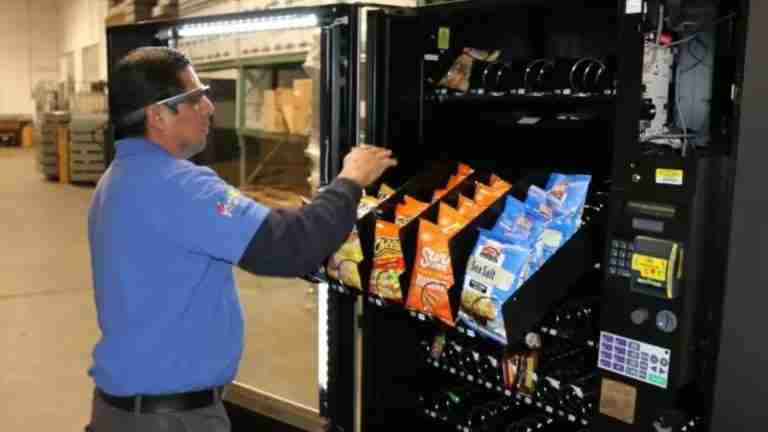Export ready American built machines in stock, shipping from Miami
How Do Coffee Vending Machines Work?
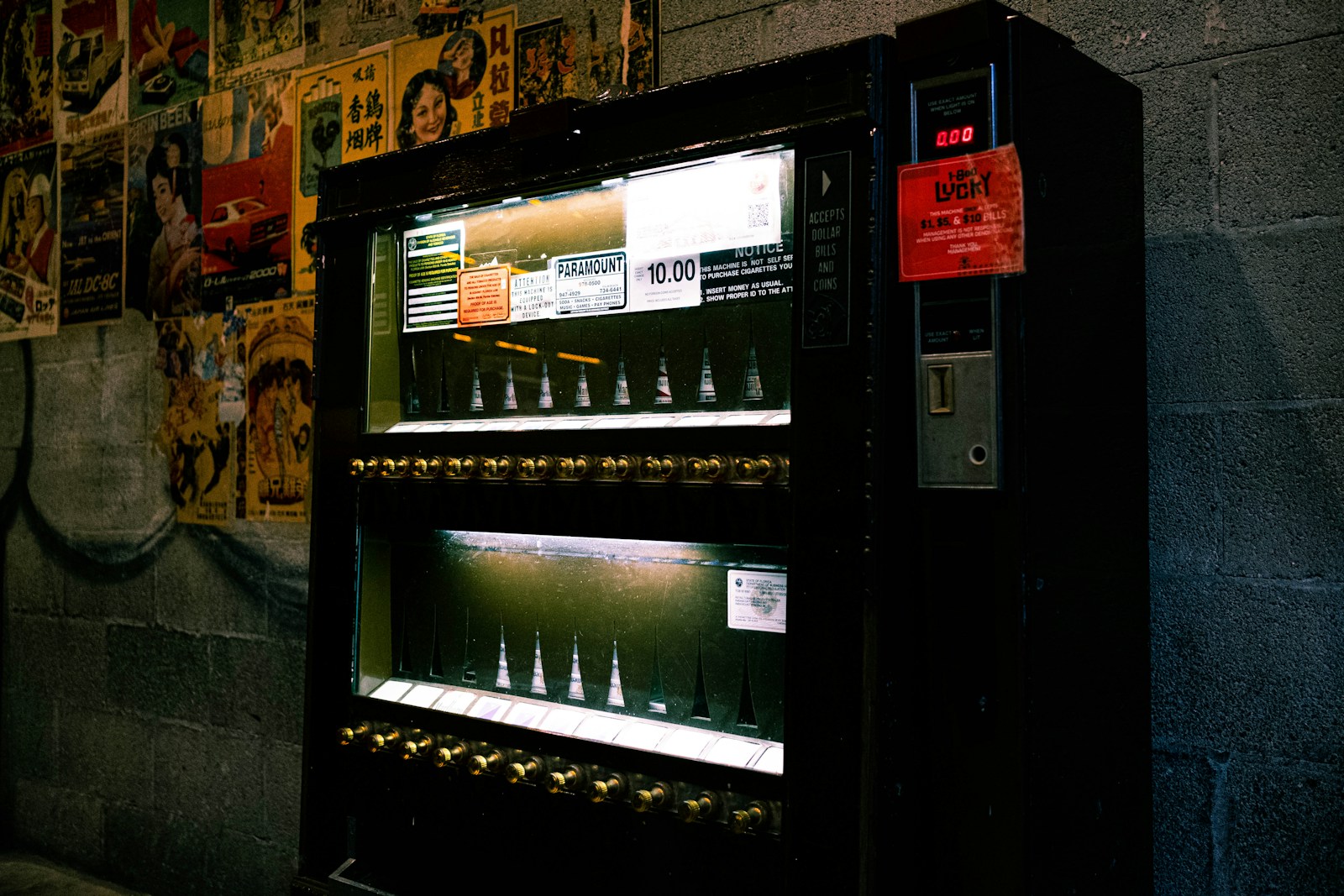
Introduction
When people ask how do coffee vending machines work, they are often curious about both the technology inside the machine and the convenience it offers in everyday life. Coffee vending machines are everywhere—from busy office break rooms to 24/7 hospital corridors—and they serve millions of cups of coffee each day. The secret to their success is that they automate one of the most consistent global habits: drinking coffee. By combining simplicity for users and profitability for operators, coffee vending machines have become an essential part of modern automated retail.
This guide shows how these machines operate, highlights the variety of models, explains the benefits for businesses and consumers, and demonstrates their reliability.
Unlike other vending systems, coffee vending is unique because it deals with fresh preparation. While snack machines simply dispense pre-packaged items, coffee machines must brew, mix, and deliver a hot beverage that feels freshly made. This balance of engineering, design, and user-friendly operation is what makes them both fascinating and effective.
How Do Coffee Vending Machines Work?
At their core, coffee vending machines are automated baristas. They combine ingredient storage, precise measurement, and brewing technology to create a hot beverage in seconds. When a user makes a selection, the machine springs into action: dispensing a cup, releasing the exact amount of coffee and ingredients, heating water to the right temperature, and blending everything into a consistent product. The process is designed to be seamless, fast, and hygienic. For businesses, this automation removes the need for staff while still delivering quality drinks customers expect.
The Step-by-Step Process
- Payment and Selection: The process begins when a user inserts coins, swipes a card, or taps a mobile wallet. Machines like the Coffee and Hot Beverage Vending Machine are built with modern payment options to ensure convenience.
- Cup Dispensing: The machine accepts payment and then dispenses a cup from internal storage, eliminating the need for users to provide one.
- Ingredient Measurement: The machine stores coffee beans, powdered milk, sugar, and flavorings in internal canisters. Depending on the selection, the machine measures and releases the right mix of ingredients.
- Water Heating and Mixing: High-efficiency boilers heat water instantly to the correct temperature. The machine then pours water over coffee grounds or powder and blends it with milk and sugar if required. Advanced models maintain consistent temperature control for better taste.
- Delivery: The finished drink is poured directly into the waiting cup. In just seconds, the user receives a fresh, hot beverage ready to enjoy.
Operator Perspective
From an operator’s standpoint, knowing how to operate coffee vending machine systems is essential. Machines must be stocked with ingredients, cups, and sugar regularly. They require cleaning cycles to ensure hygiene, and operators need to collect payments or monitor digital transactions. Machines like the CorePro Coffee Vending Machine are designed to make this process efficient, offering larger ingredient storage and reliable mechanisms that reduce downtime. For an operator, every minute a machine is offline means lost sales, so reliability is critical.
User Perspective
For the user, coffee vending machines are simple. They don’t need to know the internal mechanics; all they need to do is insert payment, make a choice, and collect their coffee. This ease of use is why coffee machines thrive in locations where convenience is key. From students grabbing a coffee between classes to night-shift workers relying on caffeine to stay focused, these machines serve diverse needs at all hours. It’s this accessibility that fuels profitability for operators while delivering satisfaction for consumers.
Types of Coffee Vending Machines
Not every location requires the same type of machine. Operators have a wide selection of models to choose from, each suited for different environments and customer needs. Understanding these differences helps answer not just how does a coffee vending machine work, but which type of machine works best for your intended audience. Below are the most common machine types and the models that represent them.
Dedicated Hot Beverage Machines
The classic solution for spaces where coffee is the sole demand is a Coffee and Hot Beverage Vending Machine. These machines focus purely on drinks, offering consistent brewing, flavor choices, and fast delivery. These machines serve offices, small hotels, and retail spaces where coffee and hot drinks remain in high demand.
Multi-Purpose Models
Sometimes a location needs more than just coffee. In gyms, hotels, or universities, customers often want both a drink and a snack. That’s where the Coffee and Snack Vending Machine becomes valuable. By combining both categories in one compact footprint, it allows operators to maximize revenue and offer customers more convenience in a single stop.
Compact and Space-Saving Units
Not every location has room for a full-sized machine. Offices, co-working spaces, and smaller businesses often prefer the Tabletop Coffee Vending Machine. Its smaller footprint makes it ideal for areas where space is limited, but demand for coffee is steady. Despite the compact size, these machines maintain high efficiency and serve beverages just as quickly as larger units.
Heavy-Duty Machines for High-Traffic Areas
Hospitals, airports, and universities require machines that can handle hundreds of cups per day without issue. The CorePro Coffee Vending Machine is designed for these environments, built with durability and larger ingredient storage. For operators, it means fewer restocks and fewer maintenance calls, maximizing uptime and profits.
Scalable Options for Growth
Entrepreneurs looking to expand quickly need machines that can be delivered and installed fast. The Pro Coffee Vending Machine is built for scalability, offering fast shipping and dependable performance. Operators can place multiple units across different locations quickly, securing prime spots and scaling their business with confidence.
Step-by-Step: How to Use a Coffee Vending Machine
For many people, the first encounter with a coffee vending machine can raise questions: how to use coffee vending machine step by step? Fortunately, the process is designed to be as simple as possible while ensuring consistency for the operator. Here’s how the machine works step by step:
- Approach and Select: The machine presents a digital or physical menu of drink options—coffee, cappuccino, espresso, or hot chocolate. Some models like the Coffee and Hot Beverage Vending Machine offer multiple flavor variations to suit different tastes.
- Payment: Users can pay using coins, bills, or modern digital options such as credit cards and mobile wallets. Machines are equipped with secure, fast payment systems to keep transactions smooth.
- Cup Dispense: Once payment is complete, the machine automatically drops a cup into the dispenser tray. This ensures cleanliness and convenience.
- Brewing and Mixing: Depending on the drink selected, the machine measures out coffee, milk powder, sugar, or chocolate, then heats and dispenses water at the correct temperature. Advanced machines, like the CorePro Coffee Vending Machine, are engineered to maintain perfect brewing consistency.
- Collect the Drink: Within seconds, the user receives their hot beverage. Machines like the Pro Coffee Vending Machine ensure the process is fast enough to handle high demand without long wait times.
For customers, this process feels effortless: insert payment, make a choice, and enjoy a fresh drink in less than a minute. For operators, the machine’s automation means every step is repeatable and consistent, ensuring quality without the need for staff intervention.
Technology Inside Coffee Vending Machines
Understanding how does a coffee vending machine work requires a closer look at the technology inside. Modern machines are far more than just dispensers—they are sophisticated systems designed to brew coffee efficiently, safely, and reliably.
Core Components
- Ingredient Canisters: Machines store coffee beans or instant coffee, powdered milk, sugar, and flavorings in separate canisters. This allows precise control over recipes.
- Brewing System: Boilers and heating elements bring water to the optimal temperature for brewing, ensuring consistent taste. Some units grind fresh beans, while others use pre-ground coffee or powder depending on the model.
- Cup Storage and Dispensing: A mechanical system drops cups one by one into the dispensing tray. This keeps the process hygienic and efficient.
- Mixers and Nozzles: Once the machine measures the ingredients, the mixers blend the drink and the nozzles dispense it smoothly into the cup.
- Payment Modules: Machines integrate with coin validators, bill acceptors, and increasingly, contactless payment systems for user convenience.
- Control Board: The machine’s control board automates every step, from payment approval to cup dispensing and brewing.
Advanced Features
Different models offer advanced features to meet unique demands:
- Multi-Drink Menus: Machines like the Coffee and Snack Vending Machine combine beverage dispensing with food, giving customers more choice in one place.
- Compact Efficiency: A Tabletop Coffee Vending Machine uses the same brewing technology as full-size models but in a smaller format, ideal for offices and co-working spaces.
- Durability for Heavy Use: The CorePro Coffee Vending Machine is designed for high-traffic locations, built with reinforced components that can handle hundreds of servings per day.
- Scalable Performance: For entrepreneurs, the Pro Coffee Vending Machine delivers consistent performance and ships quickly, helping businesses expand into new markets with speed.
Together, these systems and features explain why coffee vending machines are so effective. They balance convenience for the customer with operational efficiency for the business owner. For operators, knowing how to operate coffee vending machine systems means understanding these components and keeping them well-maintained. For end-users, all of this complexity is invisible—they only see a machine that reliably produces their coffee, every time.
What Is the Best Coffee Vending Machine?
One of the most common questions operators ask is: what is the best coffee vending machine? The truth is, the “best” model depends on where you plan to place it, who your customers are, and how much traffic you expect. Each machine type has strengths that make it ideal for specific scenarios.
- For Small Offices: The Tabletop Coffee Vending Machine is the best option when space is limited but employee demand for coffee is constant. It’s compact, efficient, and delivers quality drinks without taking up valuable floor space.
- For High-Volume Locations: In hospitals, airports, or universities, the CorePro Coffee Vending Machine shines. Its heavy-duty design, large ingredient storage, and consistent performance make it the best machine for environments where downtime is not an option.
- For Variety and Flexibility: If you’re serving customers who want both beverages and food, the Coffee and Snack Vending Machine is the best solution. It maximizes earnings per location by serving multiple customer needs at once.
- For Entrepreneurs Scaling Quickly: Operators who want to expand fast should look at the Pro Coffee Vending Machine. With fast shipping and reliable performance, it’s the best choice for securing multiple new locations in a short period of time.
- For Classic Coffee Service: The Coffee and Hot Beverage Vending Machine remains the best for traditional setups where coffee, cappuccino, and hot chocolate are the main drivers of demand.
Ultimately, the best coffee vending machine is the one that matches your audience’s needs. For operators, this means evaluating locations, understanding customer demand, and choosing a machine that balances cost, reliability, and menu flexibility.
Conclusion
So, how do coffee vending machines work? They combine automated technology with simple user steps to deliver fresh coffee anytime, anywhere. For users, it’s as easy as making a selection and enjoying a hot beverage in seconds. For operators, it’s about maintaining a reliable, profitable machine that runs with minimal oversight. From cup dispensing to brewing systems, these machines are designed to deliver consistency and convenience at scale.
Whether you’re an operator exploring new opportunities or a user curious about the process, one thing is clear: coffee vending machines are a blend of simplicity and innovation. They are built to serve, built to last, and built to profit. The only question is—where will you place your next machine?



